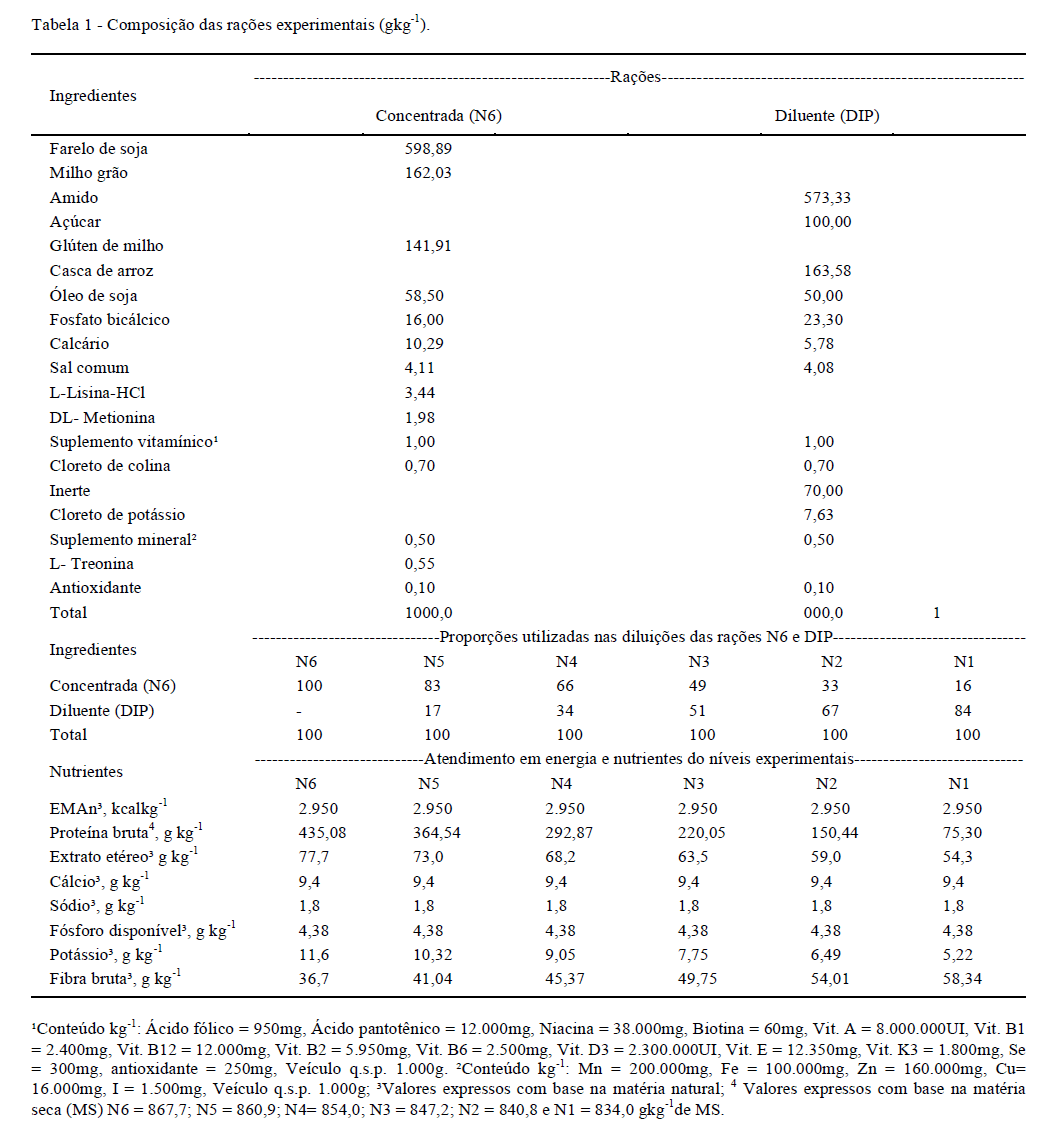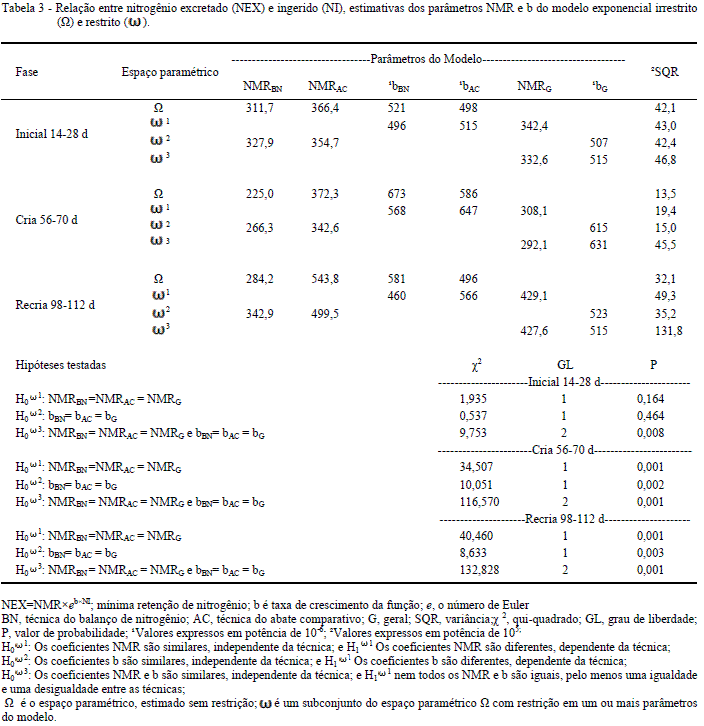The objectives of this study were to describe the potential for nitrogen retention by two techniques: comparative slaughter and nitrogen balance; compare the adjusted models for each technique and estimate the maintenance requirement for pullets. Assays were performed during 14 to 28, 56-70 and 98 to 112 days of age, using 168 pullets. The design was completely randomized with seven treatments and eight replications. Treatments consisted of protein levels ranging from 75 to 435gkg-1 of dry matter. The variables were collected by comparative slaughter and nitrogen ingested and deposited in nitrogen balance technique intake and nitrogen excretion. The intercept of the exponential relationship between ingested and excreted nitrogen was considered a requirement for maintenance. The adjusted models were compared by using the maximum likelihood ratio. The techniques described differently compared the requirement for maintenance of nitrogen. For comparative slaughter requiring maintenance was estimated at 342, 372 and 543mg/kgPC0,67 and for nitrogen balance was 342, 225 and 284mg/kgPC0,67 for the period of 14 to 28, 56-70 and 98 to 112 days of age, respectively.
requirement for maintenance; nitrogen balance; comparative slaughter





